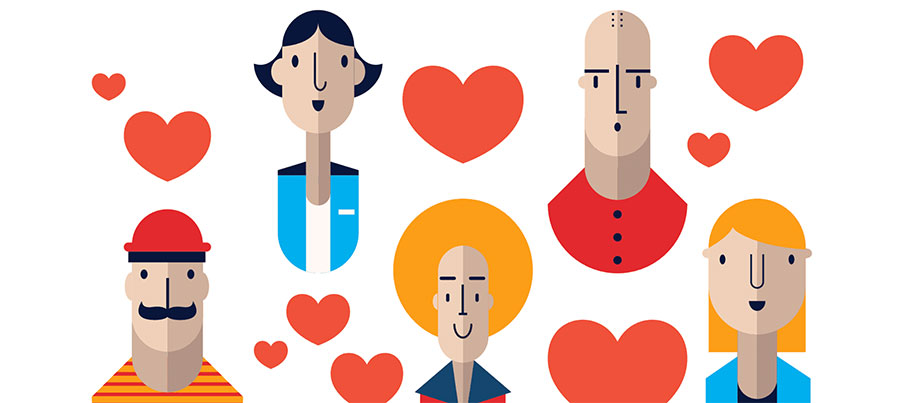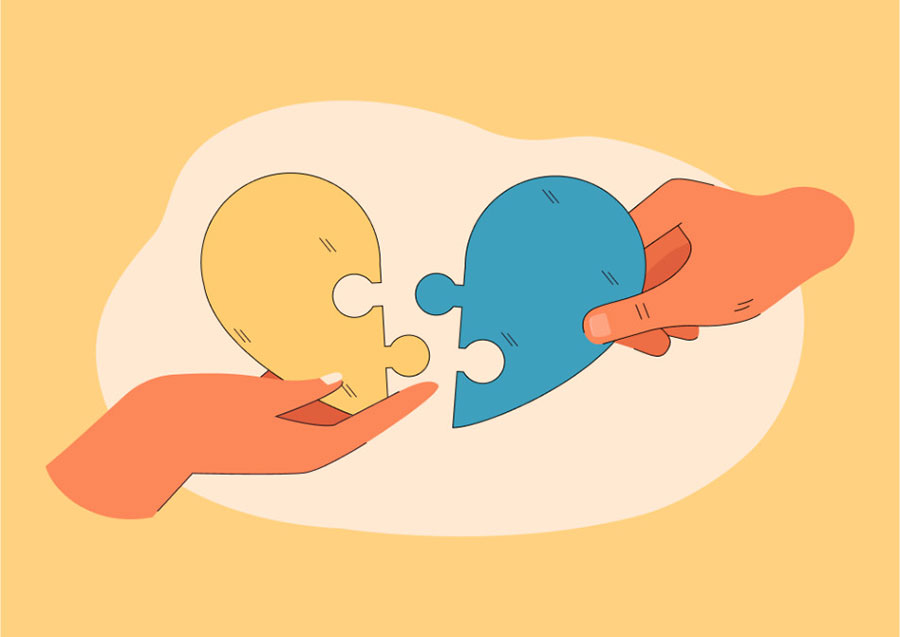The Titanic was the largest ship ever built at the time of its construction. The Titanic was deemed unsinkable due to its turn-of-the-century design and technology. According to her designers, even in the worst-case scenario of two ships colliding at sea, the Titanic would remain afloat for two to three days, giving time for nearby ships to aid.
However, on April 14, 1912, the Titanic collided with a massive iceberg and sank in less than three hours. The largest ship ever built sank in a fraction of the time estimated for her worst possible sea accident after what appeared to be a minor collision with an iceberg.
Who would have thought a massive floating iceberg could sink the largest unsinkable moving object ever built? An iceberg is just like a customer’s needs, the rational needs can be seen above the surface, and the emotional needs are intangible and can sink the ship of your business in no time.
What are the emotional needs of a customer?

ICICI bank’s tagline says, “Hum hain na,” likewise Croma says, “Helping you buy,” Mahindra, “WIth you hamesha,” HDFC bank, “We understand your world,” The Economic Times, “It is you.” Metlife India Insurance, “Have you met life today?” Successful brands know the art of tapping into the emotions of the customers, they barely talk about the world-class products in their tagline, however, they focus on connecting with their customers by addressing their emotional needs.
According to Forrester’s (Nasdaq: FORR) 2021 India Customer Experience Index (CX IndexTM), only four out of 29 brands improved their CX scores significantly. HDFC Bank saw the greatest increase of any brand across all industries, and it was the only brand to be rated excellent. Honda and Maruti Suzuki, as well as digital retailer Amazon.com, improved their game to move from OK to good.
The emotional needs of the customer are seldom expressed and always expected and can either enhance or derail the customer experience. Brands need to be more empathetic and pay heed to the emotional needs of a customer. Customers never ask for their emotional needs to be fulfilled, they do not carry a trust-o-meter, or shout out loud to be understood or heard, they are simply a feeling which can be drawn from the conversation. They do not make eye contact with the guard and silently say, “I am the customer, the king, and respect me.” They won’t express them, however, expect to be addressed well, and understood.
Harvard Business Review surveyed 850 worldwide executives and their businesses to discover that companies embracing life-centricity and addressing emotional touchpoints of their customers are more likely to excel above and beyond their competitors. According to the analysis, life-centric businesses will achieve annual growth rates that are nine percentage points higher on average — a 900 basis point increase in growth rates. The analysis also reveals that life-centric businesses are more resilient, outperforming in terms of speed to market and customer lifetime value.
What consumers truly value can be difficult to pinpoint and can be psychologically complex. However, universal value building blocks do exist, providing opportunities for companies to improve their performance in existing markets or enter new markets. There is a fair chance it will result in increased customer loyalty, increased consumer willingness to try a particular brand, and sustained revenue growth.
Identifying and responding to customers’ emotional needs can take some practice. Here are three techniques to help you improve your skills.
1. Pay close attention
Many people fail to notice their customers’ emotions because they are simply not looking for them. Try to be aware of the emotions your customers might well be experiencing. Pay attention to their body language and tone of voice for clues about their emotions.
2. Make emotional needs a priority
How customers feel about your service is ultimately more significant than the service itself, prioritizing emotions when serving customers. Allow an irate customer to vent before resolving their issue. Before assisting a confused customer, reassure them. Before you get down to business, share a laugh with an upbeat, light-hearted customer.
3. Realign the solution
When there is a problem that irritates a customer, try to avoid blaming them. Dwelling on the source of negative emotions frequently exacerbates them. Recognize your customers’ emotions to validate them, then redirect the conversation to finding a solution and making them feel better.
Identifying and meeting your customers’ emotional needs is pulling at the customer’s heartstrings. These needs are buried beneath the logical, rational, and top-of-mind lists that people keep in their heads. Consumers avoid discussing their emotional needs, especially with strangers, vendors, and frequently focus group moderators. They want to come across as logical and rational. You must get close enough to your customer to truly understand them as a ship to the iceberg without getting hit and sunk in the process.
What are the rational needs of a customer?

Rational needs are the products and processes which are tangible in nature. They are something we can ask for, like a discount on a product, ask for free accessories with the product, or any schemes. A customer never hesitates while asking for a rational need. They are hard differentiators, and action-driven and they maximize the benefits of satisfaction, utility, and welfare. A billing problem may agitate the customer, however, a good customer service representative will go head over heels to meet the customer’s requirements and make them feel relieved and heard. The majority of what happens in customer service is geared toward meeting the rational needs of the customer.
How can I assist you? What appears to be the issue? Is there anything else I can help you with?
While rational needs can be clearly articulated and are strong drivers of consumer choice, they are generic and challenging for a brand to own. A customer may demand a low price because it meets a rational need. Delivering only rational category benefits makes it more difficult to establish a long-term connection and thrive in any competitive category.
- A cereal that “tastes great” will only be unique until the next great-tasting cereal blows the customer’s mind.
- A survey of airline passengers whose flights were canceled revealed that the manner in which the cancellation was handled had more than twice the impact on customer satisfaction as the cancellation itself.
The Top-hand of Emotional and Rational Needs

We started the series of customer engagement and discussed a customer-centric approach. Down the line, the journey covered the following topics. In order to harness the power of human connections always and in all ways, we have to emphasize following each step in our customer engagement journey, or else there is a possibility of dissatisfying a customer or even worse, losing the customer.
1. Unlocking customer engagement
Customers have so much power now. The depth of a customer’s relationship with a brand is measured by customer engagement. Every interaction has the potential to strengthen or weaken the relationship. The closer a company can connect with its customers’ preferences, the deeper customer engagement grows and becomes more mutually beneficial, from purchasing to writing a review to enrolling in a loyalty program.
2. Measuring Customer Engagement
When it comes to delving into the treasure trove of data to measure customer engagement, a bird’s-eye view of how customers interact with your brand is required. Customer engagement, like any other business vertical, must have a goal. Brands should consider questions such as “What are we attempting to achieve?” What are we aiming for? You can use this to determine how successful your campaign is.
3. Types of customers
In customer engagement, a one-size-fits-all approach does not work. Organizations, on the other hand, are attempting to standardize or robotize customer engagement teams to adopt a single method for dealing with different types of customers. A successful customer-service organization understands its customers’ psychology and, rather than robotizing the engagement team, invests in the team to help them read the customer’s mind and then choose an appropriate engaging technique.
4. Moment of truth
Any interaction in which a customer forms an opinion about your brand or product is a moment of truth. This could be a positive or negative impression. The company’s goal is to ensure that critical moments have a positive impact on the brand or product’s perception among customers or users. The customer will forget the last interaction and will evaluate the organization again in every situation. As a result, assessing the moment of truth becomes difficult.
5. Customer satisfaction and Kano Model
Dealing with customer satisfaction is a nightmare for businesses. It is of utmost importance for brands to answer these questions, “How can a product or service add a high level of customer satisfaction?” How to describe the features and characteristics to enhance customer satisfaction? The Kano model is a used method to address customer needs and answer these questions. It has been widely regarded as the most adequate tool by industries for classifying customer needs based on survey data.
6. Customer-oriented communication
It is a business strategy that prioritizes the customer’s needs over the company’s needs. Customer-focused companies recognize that they will not thrive unless they consistently improve their customer focus. It is a way of thinking that aligns the goals of your company with those of your customers. Developing a customer-centric culture necessitates recognizing that customers are the business.
Businesses are making efforts to better understand customer needs and meet them as soon as possible to coordinate with internal teams. 76 percent of customers expect brands and businesses to understand and act better on their needs. Every step mentioned above is incomplete without keeping customer needs at the forefront. Companies that keep customer needs at their focal point are 60 percent more profitable than the rest.
When you begin prioritizing positive customer experiences, you must successfully identify them in your products and services. Customers are extremely satisfied when your brand aligns with their needs. Delivering a great experience expands your customer base of loyal customers. Knowledge of customer needs and desires adds not only constructive value but also raises overall brand recognition. It gives your company a competitive advantage and keeps you ahead of the competition.
These are the seven steps to an amazing customer engagement journey, and the series ends with this. If any brand, business, or organization takes care of its customer engagement framework and organizes interactions and activities into a streamlined process to create an ultimate customer experience, then there is a fair chance to gravitate customers in your brand’s direction.
https://www.revechat.com/blog/customer-needs/
https://24kmarketing.com/2011/09/consumer-needs-functional-or-emotional.html
https://www.toistersolutions.com/blog/2014/5/2/the-most-important-customer-need-is-often-overlooked
https://www.sheerid.com/blog/how-to-connect-with-customers-through-emotional-marketing/
https://hocwebuat.copperproject.com/wordpress/wp-content/uploads/2017/10/customer-loyalty.gif
https://static01.nyt.com/images/2022/01/16/books/review/04DeWAAL/04DeWAAL-superJumbo.jpg
Written By: Jimmy Jain
Edited By: Afreen Fatima
Society of Design Thinking Professionals









